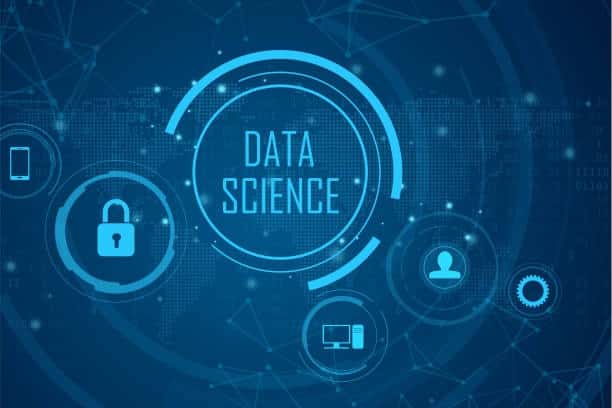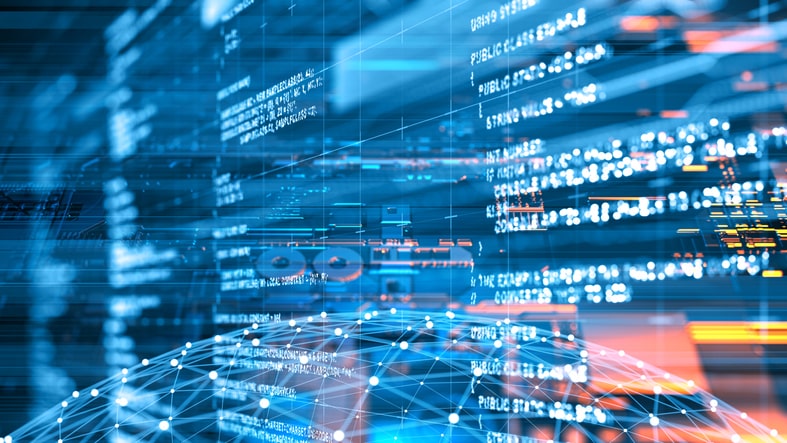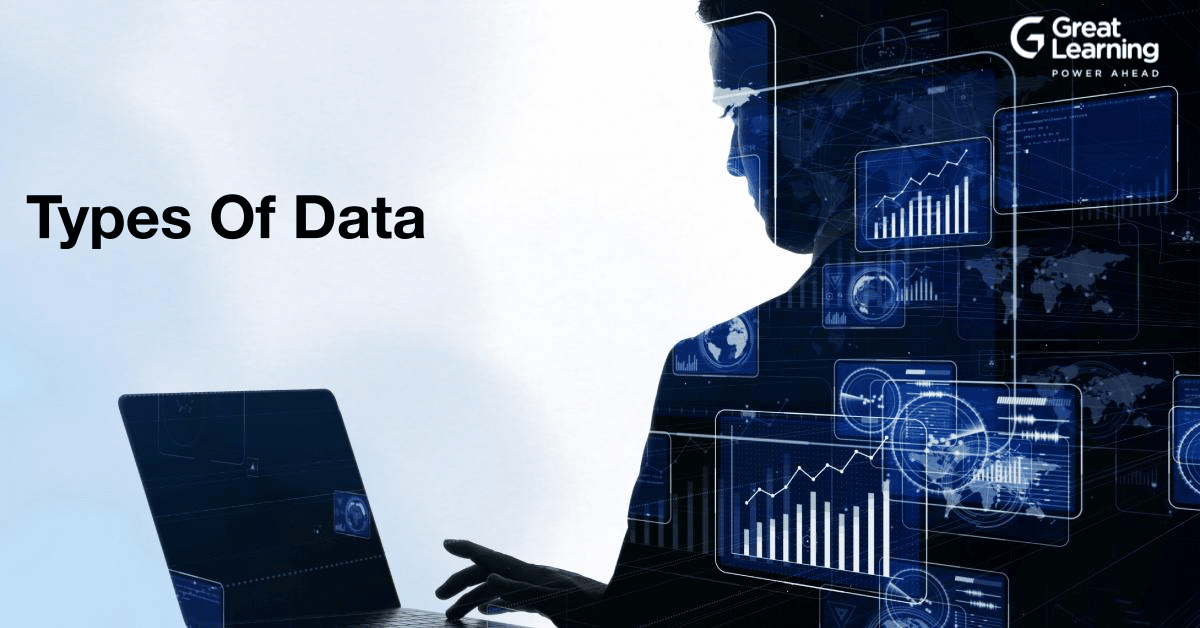In 2025, data science is not just about analyzing large datasets; it’s about intelligent decision-making, automation, and ethical AI.
With the rise of generative AI, no-code machine learning, and data-centric AI, businesses must adapt to stay ahead.
This article uncovers the seven latest trends revolutionizing data science and how they will shape the future.
1. AI-Augmented Data Science
In 2025, AI-augmented data science is revolutionizing the way data professionals work by integrating artificial intelligence and automation into every stage of the data science workflow.
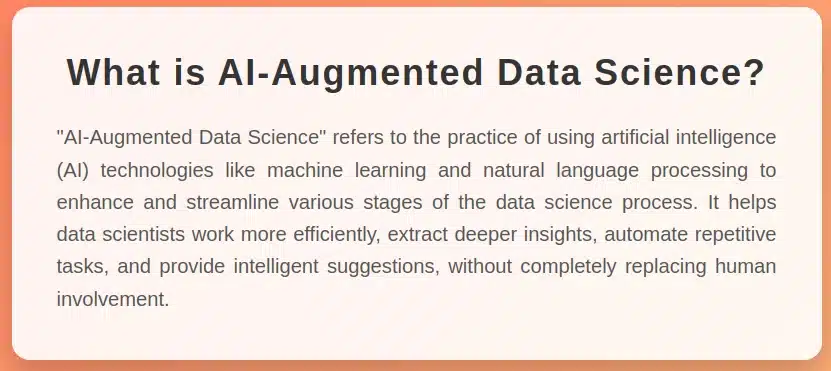
Key Aspects of AI-Augmented Data Science:
- Automated Data Preprocessing: AI-driven tools can now clean, normalize, and preprocess raw data with minimal human intervention. They detect missing values, handle outliers, & optimize feature scaling, reducing the time spent on tedious tasks.
- AI-Driven Feature Engineering: Feature extraction & selection are important for model performance. AI is now able to process large datasets & automatically produce the most relevant features, resulting in improved model interpretability & accuracy.
- Intelligent Model Selection & Optimization: Instead of manually experimenting with different models, AI-powered platforms can recommend the best machine learning algorithms, fine-tune hyperparameters, and optimize performance using techniques like AutoML (Automated Machine Learning).
Impact on Data Science:
- Reduces Human Effort: Time-consuming processes such as data wrangling and feature selection are taken care of, enabling data scientists to concentrate on high-level strategy and decision-making.
- Improves Model Accuracy: AI makes sure that the optimal features and models are used, resulting in more accurate and reliable predictions.
- Accelerates Time-to-Insight: By automating key processes, businesses can extract insights faster and deploy AI solutions with greater efficiency.
AI-augmented data science is not about replacing data scientists; it’s about empowering them with smarter tools to work faster, make better decisions, and drive innovation.
2. Edge Computing & Real-Time Data Processing
As data volumes skyrocket, the traditional cloud-centric approach is evolving towards edge computing, where data is processed closer to the source rather than being sent to distant cloud servers. This shift enables real-time analytics, reducing latency and enhancing security.
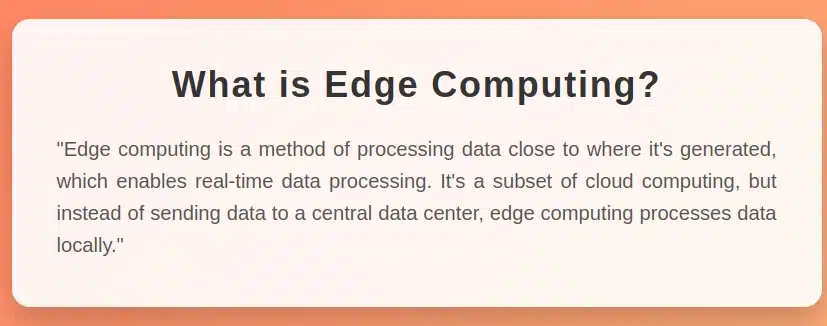
Why is Edge Computing Gaining Traction?
- Lower Latency: Since data is processed locally at the edge (e.g., IoT devices, sensors, or gateways), insights are generated almost instantly, making it ideal for time-sensitive applications.
- Reduced Bandwidth Costs: Transmitting large datasets to the cloud is expensive and slow. Edge computing processes data locally, reducing the amount of data sent over networks.
- Enhanced Security & Privacy: Since sensitive data is analyzed at the source, the risk of cyber threats and data breaches is minimized.
Key Use Cases of Edge Computing & Real-Time Data Processing
- Autonomous Vehicles: Self-driving cars rely on real-time AI processing to make split-second navigation decisions. Edge computing enables instant data analysis from cameras, LiDAR, and sensors without depending on the cloud.
- IoT & Smart Cities: Smart devices, from traffic management systems to industrial automation, leverage edge computing for real-time monitoring and adaptive control without constant cloud interaction.
- Healthcare & Remote Patient Monitoring: Smart medical devices and wearable gadgets locally analyze patient vitals and immediately alert doctors in the event of abnormalities, making emergency response quicker.
- Financial Services & Fraud Detection: Edge analytics is used by banks and financial technology companies to identify fraud in real-time, stopping fraud attempts before they are made.
Impact on Data Science
- Faster Decision-Making: With real-time analytics, businesses can act on data immediately, improving operational efficiency.
- More Secure & Private Data Handling: Organizations can process and store sensitive data locally, reducing privacy risks.
- Optimized AI Workflows: AI models deployed at the edge can continuously learn and adapt based on live data streams, leading to smarter automation.
With edge computing and real-time data processing, 2025 is shaping up to be an era of instant intelligence, improved efficiency, and greater autonomy in data science applications.
3. Data-Centric AI & Synthetic Data
Conventional AI development has been majorly concentrated on model optimization, but 2025 is seeing an inclination toward data-centric AI, wherein enhancing data quality is given more emphasis than merely tuning models. This practice makes AI systems more generalizable, unbiased, and strong.
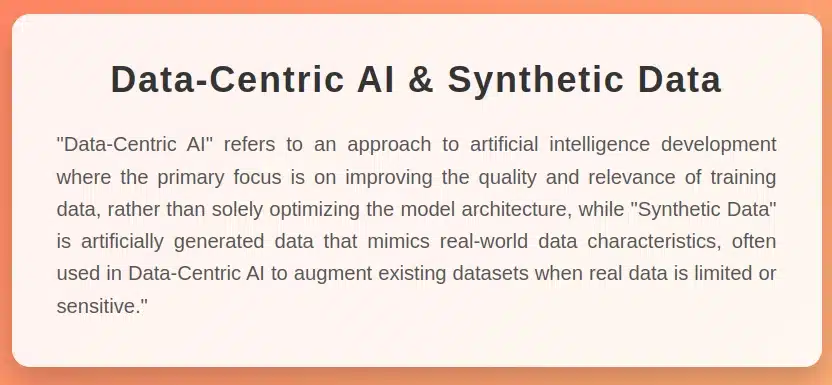
Why is Data-Centric AI the Future?
- High-Quality Data > Complex Models: Instead of endlessly tweaking algorithms, researchers are improving data labeling, augmentation, and preprocessing, which significantly enhances model performance.
- Addressing Bias & Ethical AI: Biased or incomplete datasets lead to unfair AI decisions. By ensuring diverse and well-represented training data, AI models become more accurate and fair.
- Improved Generalization: Well-structured data reduces overfitting and enables models to perform better in real-world scenarios.
The Rise of Synthetic Data
Since real-world data can be limited, biased, or sensitive, companies are turning to synthetic data, artificially generated datasets that mimic real-world data patterns while preserving privacy.
- Privacy-Preserving AI: Synthetic data eliminates the risk of exposing sensitive user information, making it invaluable for healthcare, finance, and government applications.
- Bias Reduction: AI models trained on real-world data often inherit societal biases. Synthetic datasets can be curated to ensure balanced representation, improving model fairness.
- AI Model Generalization: Since synthetic data can simulate diverse edge cases and rare scenarios, AI models become more resilient and adaptable across different environments.
How Enterprises Are Using Synthetic Data?
- Healthcare & Drug Discovery: AI models for disease prediction and drug simulations are trained on synthetic patient records to protect real patient privacy while maintaining high accuracy.
- Financial Fraud Detection: Banks generate synthetic transaction data to train fraud detection models, ensuring security without exposing customer details.
- Autonomous Vehicles & Robotics: Self-driving cars use synthetic data to simulate different weather, traffic, and road conditions, allowing AI systems to adapt to unseen real-world scenarios.
Impact on Data Science
- Better Model Performance with Less Data: Instead of collecting vast amounts of real-world data, synthetic datasets enable quicker AI training with higher efficiency.
- Enhanced AI Fairness & Transparency: By reducing biases and ensuring diverse data representation, AI systems become more ethical and responsible.
- Stronger Data Privacy Compliance: Businesses can comply with strict regulations (like GDPR & HIPAA) by replacing sensitive data with synthetic alternatives.
With data-centric AI and synthetic data, organizations can train smarter, fairer, and more adaptable AI models, unlocking new possibilities in machine learning.
4. Responsible & Explainable AI (XAI) in Data Science
As AI becomes deeply integrated into critical sectors like healthcare, finance, and law enforcement, the demand for transparency, fairness, and accountability in AI-driven decisions is rising.
In 2025, Responsible AI and Explainable AI (XAI) are at the forefront of ethical data science, ensuring that AI systems are trustworthy, unbiased, and interpretable.
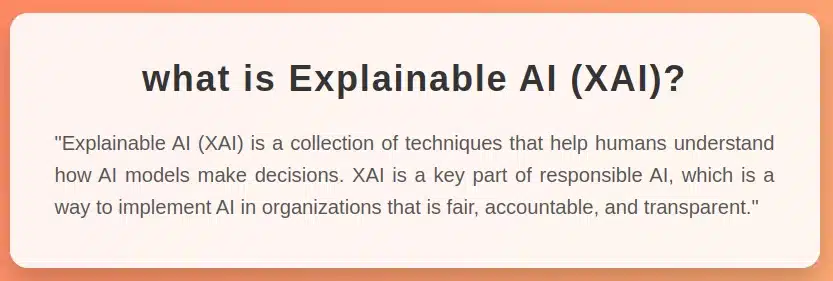
Why is Responsible AI Important?
- Transparency in AI Decision-Making: Many AI models, especially deep learning, act as “black boxes,” making it difficult to understand how they arrive at decisions. Responsible AI aims to make these processes more interpretable.
- Regulatory Compliance: Governments and organizations are enforcing strict AI governance policies like the EU’s AI Act and the U.S. Algorithmic Accountability Act, requiring AI models to be explainable and fair.
- Ethical AI & Bias Reduction: AI models can unintentionally perpetuate biases based on training data. Responsible AI ensures fairness by regularly auditing data sources and decision logic.
Key Explainability Techniques in XAI
To build trust in AI systems, several XAI techniques help data scientists interpret model decisions and identify biases:
SHAP (Shapley Additive Explanations):
- Assigns feature importance scores, showing how each input feature impacts the model’s predictions.
- Used in finance (credit scoring) and healthcare (diagnosis models) to explain AI decisions.
LIME (Local Interpretable Model-Agnostic Explanations):
- Generates simplified local explanations by approximating complex models with interpretable ones.
- Helps in fraud detection and legal AI systems to justify decisions.
Counterfactual Analysis:
- Shows “what-if” scenarios, illustrating how different inputs would change the model’s output.
- Used in loan approval systems and hiring algorithms to ensure fair decision-making.
Real-World Applications of Responsible & Explainable AI
- Healthcare: AI-driven diagnostics need to explain why a disease is predicted to help doctors validate treatment plans.
- Finance & Banking: Credit scoring models must provide clear reasoning behind loan approvals or rejections to meet regulatory standards.
- Legal & Criminal Justice: AI systems used in sentencing and risk assessment require explainability to prevent biased rulings.
- AI Ethics & Social Impact: Companies like Google, Microsoft, and IBM are investing in fairness auditing tools to ensure their AI aligns with ethical guidelines.
Impact on Data Science
- Increased Trust in AI: Transparent AI decisions help users understand and trust the technology.
- Better Compliance & Risk Management: Meeting legal and ethical AI standards reduces the risk of penalties and reputational damage.
- More Ethical AI Development: By implementing XAI techniques, data scientists can create bias-free, fair, and human-centered AI models.
With Responsible & Explainable AI, the future of AI-driven decision-making is not just powerful, but also ethical, interpretable, & aligned with human values.
5. Quantum Computing & Advanced Analytics
As we move into 2025, quantum computing is transforming data science by solving complex problems that classical computers struggle with.
With its ability to process massive datasets, optimize intricate models, and accelerate simulations, quantum computing is redefining analytics in industries like finance, cryptography, & drug discovery.
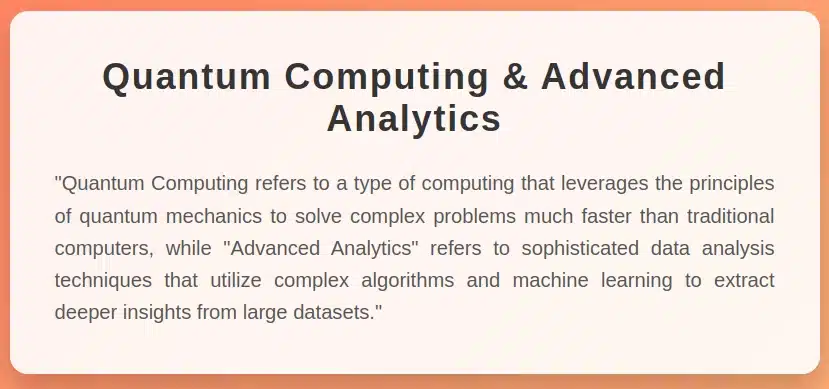
How Quantum Computing is Revolutionizing Data Science?
- Exponential Speed & Parallelism: Unlike classical computers, which process one calculation at a time, quantum computers leverage qubits to perform multiple calculations simultaneously, dramatically reducing computational time.
- Solving Complex Optimization Problems: Quantum algorithms like QAOA (Quantum Approximate Optimization Algorithm) tackle problems that are infeasible for traditional methods, such as supply chain logistics, financial portfolio optimization, and AI model training.
- Enhanced Machine Learning Capabilities: Quantum-enhanced algorithms can analyze high-dimensional datasets faster, improving pattern recognition and anomaly detection in real-world applications.
Key Applications of Quantum Computing in Data Science
Cryptography & Cybersecurity:
- Quantum computers can break traditional encryption methods (RSA, ECC) and enable quantum-resistant cryptography for next-gen cybersecurity.
Financial Modeling & Risk Analysis:
- Quantum computing improves Monte Carlo simulations, helping banks & investment firms make faster & more accurate risk assessments.
- Portfolio optimization benefits from quantum-enhanced asset allocation, improving returns while managing volatility.
Drug Discovery & Healthcare:
- Quantum simulations help model molecular interactions, leading to faster drug development & precision medicine breakthroughs.
- Companies like Pfizer and Roche are leveraging quantum algorithms to discover new compounds efficiently.
AI & Data Science:
- Quantum-inspired machine learning (QML) accelerates deep learning models, allowing AI to train faster on massive datasets.
- Companies are exploring quantum feature selection to improve model interpretability and accuracy.
Industry Leaders in Quantum Data Science
- IBM Quantum: Leading research on quantum AI and hybrid quantum-classical machine learning. Their Qiskit framework enables developers to experiment with quantum algorithms.
- Google Quantum AI: Achieved “quantum supremacy” in 2019 with Sycamore, a quantum processor that outperformed classical supercomputers in a benchmarking task.
- D-Wave Systems: Focused on quantum annealing for optimization and logistics problems, helping businesses improve decision-making.
Impact on Data Science
- Next-Generation Analytics: Quantum computing enables faster data processing, unlocking insights that were previously computationally infeasible.
- Hybrid Quantum-Classical Models: Businesses are adopting quantum-classical hybrid approaches, combining the best of both worlds for scalable AI solutions.
- New Security Standards: As quantum computing disrupts cryptography, organizations must adopt post-quantum encryption to protect sensitive data.
With companies like IBM, Google, and Microsoft investing heavily in quantum advancements, data scientists must prepare for the quantum-driven future, where AI, analytics, and cybersecurity will be transformed by quantum-powered computation.
Conclusion
As data science evolves with AI-driven automation, edge computing, responsible AI, and quantum-powered analytics, professionals must stay ahead of the curve.
Mastering these trends requires cutting-edge skills and hands-on experience, exactly what Great Learning’s Data Science courses offer.
No matter what you want to upskill in – AI, quantum computing, or advanced analytics – our world-class curriculum is designed to make you future-proof. Join us today and remain at the edge of data science innovation!
